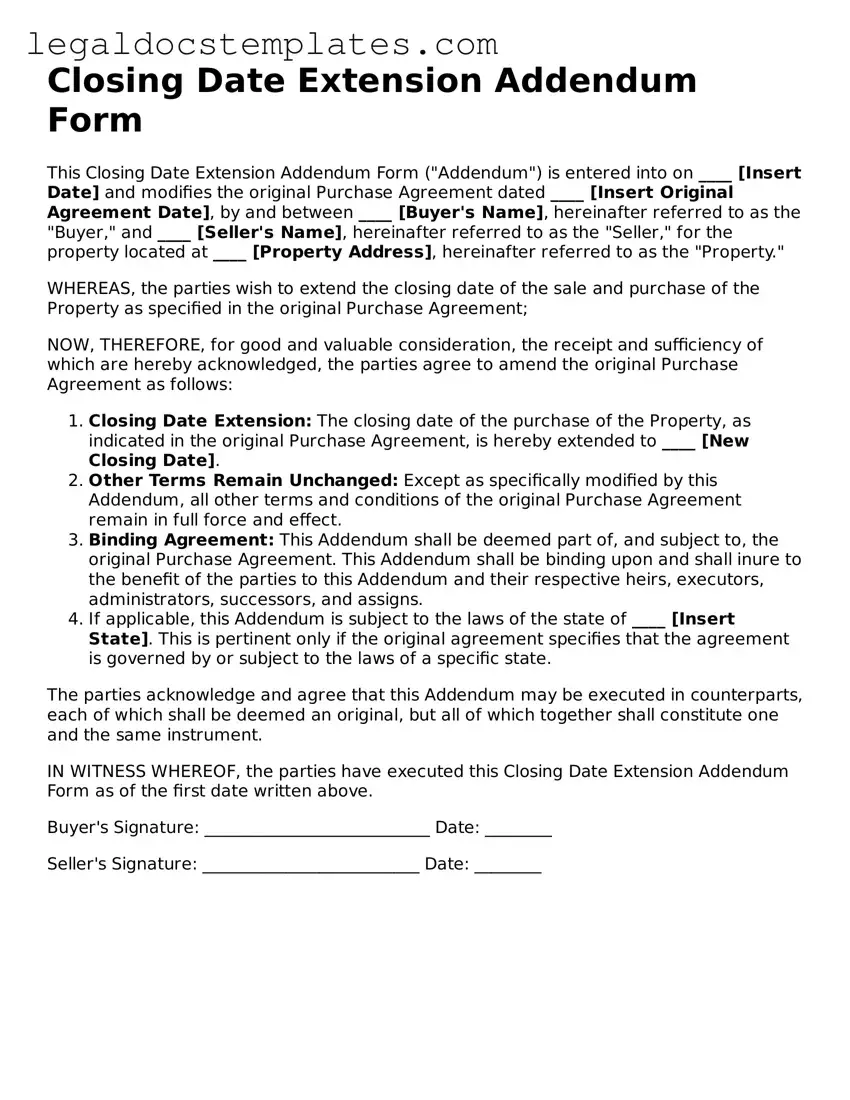Closing Date Extension Addendum Form
This Closing Date Extension Addendum Form ("Addendum") is entered into on ____ [Insert Date] and modifies the original Purchase Agreement dated ____ [Insert Original Agreement Date], by and between ____ [Buyer's Name], hereinafter referred to as the "Buyer," and ____ [Seller's Name], hereinafter referred to as the "Seller," for the property located at ____ [Property Address], hereinafter referred to as the "Property."
WHEREAS, the parties wish to extend the closing date of the sale and purchase of the Property as specified in the original Purchase Agreement;
NOW, THEREFORE, for good and valuable consideration, the receipt and sufficiency of which are hereby acknowledged, the parties agree to amend the original Purchase Agreement as follows:
- Closing Date Extension: The closing date of the purchase of the Property, as indicated in the original Purchase Agreement, is hereby extended to ____ [New Closing Date].
- Other Terms Remain Unchanged: Except as specifically modified by this Addendum, all other terms and conditions of the original Purchase Agreement remain in full force and effect.
- Binding Agreement: This Addendum shall be deemed part of, and subject to, the original Purchase Agreement. This Addendum shall be binding upon and shall inure to the benefit of the parties to this Addendum and their respective heirs, executors, administrators, successors, and assigns.
- If applicable, this Addendum is subject to the laws of the state of ____ [Insert State]. This is pertinent only if the original agreement specifies that the agreement is governed by or subject to the laws of a specific state.
The parties acknowledge and agree that this Addendum may be executed in counterparts, each of which shall be deemed an original, but all of which together shall constitute one and the same instrument.
IN WITNESS WHEREOF, the parties have executed this Closing Date Extension Addendum Form as of the first date written above.
Buyer's Signature: ___________________________ Date: ________
Seller's Signature: __________________________ Date: ________
